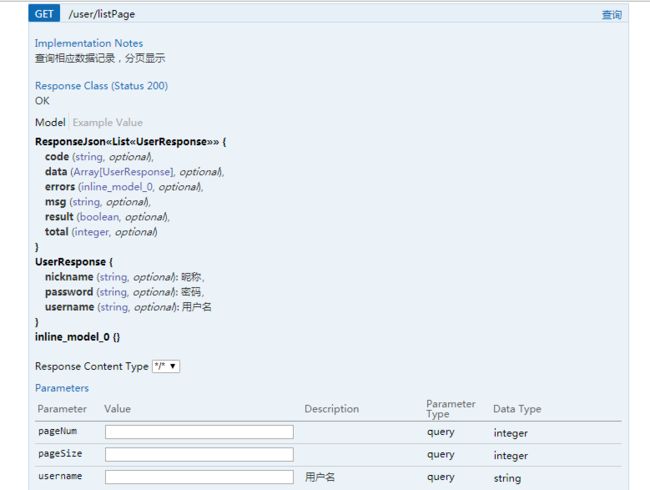- 【云笔记搭建】Visual Code + Github仓库 + Git
GPNU_Log
githubgitvscode云端
0.前言文章目录0.前言1.需要的工具2.工具准备2.1VisualCode2.2Github仓库1.自行注册账号2.点击右上方新建仓库3.填写仓库信息4.获取仓库token2.3git的安装与使用3.笔记的使用及VisualCode插件的推荐3.1新建笔记文件夹3.2插件的推荐3.2.1.PicGo3.2.2markdownlint3.2.3MarkdownAllinone4.一些小技巧4.1改
- PDF发票批量打印工具哪个好?高效打印发票的实用工具推荐
软***c
pdfPDF批量打印发票批量打印工具
开小超市这几年,每月要打几十张进货发票做账,以前打印时总犯愁:有的发票PDF太大,打出来字小得看不清;有的又太窄,白白浪费半张纸。试过手动调整,每张都要改缩放比例,累不说,还经常弄错。上个月在同行群里被安利了个PDF发票批量打印工具,简直是救星。把所有发票导进去,勾选“全部打印”,软件会自动把每张发票调整到最合适的大小,既能看清字,又不浪费纸。我算了下,用了这工具,每月A4纸能省差不多三分之一。以
- 《花雕学AI》04:尝鲜功能丰富且容易上手的AI绘画工具——Leonardo AI
驴友花雕
偶然机缘,我接触到了另外一个AI绘画平台:Leonardo.AI00.jpg它是一个新的AI图像平台,其输出质量可与目前最火的Midjourney相媲美,当然差距还是有的。其链接是https://leonardo.ai/,界面如下图。01.jpg我填写了电邮地址,申请试用的资格,后来,就没有下文了,呵呵......02.jpg然后,使用谷歌账号,居然马上通过了,取得了试用的资格。03.jpg04.
- NLP论文速读|chameleon:一个即插即用的组合推理模块Plug-and-Play Compositional Reasoning with Large Language Models
Power2024666
NLP论文速读自然语言处理人工智能机器学习深度学习nlp语言模型
论文速读|Chameleon:Plug-and-PlayCompositionalReasoningwithLargeLanguageModels论文信息:简介:该论文介绍了一个名为Chameleon的人工智能系统,旨在解决大型语言模型(LLMs)在处理复杂推理任务时存在的固有限制,例如无法访问最新信息、使用外部工具以及执行精确的数学和逻辑推理。Chameleon通过插入即用模块增强LLMs,使其
- Claude Code 分层多Agent架构篇
强化学习曾小健
c#开发语言
ClaudeCode分层多Agent架构篇原创飞鸟白菜shareAI2025年07月01日09:31广东本文档基于ClaudeCode源代码的深度逆向工程分析,详细还原了其分层多Agent架构的完整技术实现。通过分析混淆代码和运行时行为,我们深入揭示了Task工具如何实现SubAgent的创建、生命周期管理、并发执行协调以及安全隔离机制,为理解现代AI编程助手的核心架构提供了详尽的技术洞察。htt
- Python机器学习:从零基础到项目实战
Yuner2000
Python机器学习人工智能
目录第一部分:思想与基石——万法归宗,筑基问道第1章:初探智慧之境——机器学习世界观1.1何为学习?从人类学习到机器智能1.2机器学习的“前世今生”:一部思想与技术的演进史1.3为何是Python?——数据科学的“通用语”1.4破除迷思:AI是“神”还是“器”?第2章:工欲善其事——Python环境与核心工具链2.1“乾坤在握”:Anaconda与JupyterNotebook的安装与配置2.2“
- web前端进阶之Javascript设计模式面向对象篇
jia林
前言:在此说明Javascript设计模式所讲内容和知识点来自双越老师(wangEditor富文本开源作者)的视频,内容通俗易懂,受益匪浅,结合自己的学习心得整理成笔记,与大家分享,愿在前端的道路上越走越远.....从“写好代码”到“设计代码”的过程,不仅是技术的提升,更是编程思维的提升,而这其中最关键的就是设计模式,是否理解并掌握设计模式,也是衡量程序员能力的标准之一。学习前提使用过jquery
- 快速排序Java代码简洁实现
SKY技术修炼指南
算法
学习过数据结构的同学们都知道,快速排序算法是一种时间复杂度为O(nlogn)的排序算法,在各种排序算法中算是较为高效的方法,企业面试中也经常有手撕快排的环节。本文将阐述算法的基本思想,并用Java代码的形式实现快速排序代码。算法思想快速排序主要采用分治的基本思想,每次将一个位置上的数据归位,此时该数左边的所有数据都比该数小,右边所有的数据都比该数大,然后递归将已归位的数据左右两边再次进行快排,从而
- 如何防止重复提交订单?
天天摸鱼的java工程师
java
如何防止重复提交订单?作者:Java后端开发工程师一、背景介绍:为什么会产生重复提交?在电商平台中,用户提交订单是一个非常敏感的动作。这通常涉及:库存扣减优惠券核销支付下单消息发送但用户总喜欢:点两次“提交订单”按钮网络卡顿时刷新页面使用浏览器回退再次提交结果就是:重复提交订单,造成资源浪费,甚至业务损失!二、问题分析:重复提交的常见场景场景示例用户行为多次点击按钮、浏览器刷新接口幂等性差接口无幂
- 如何设计一个高并发短链接服务(如 bit.ly)?
天天摸鱼的java工程师
java
如何设计一个高并发短链接服务(如bit.ly)?引言:在社交媒体营销、短信推广等场景中,短链接服务已成为互联网基础设施的关键组件。全球每天有数十亿短链接被创建,如Bitly、TinyURL等服务每天处理数十亿请求。作为一名拥有8年经验的Java架构师,我曾主导设计过日处理千万级短链接的系统。今天我将从原理到实现,深度解析如何构建一个高性能、高可用、可扩展的短链接服务。一、业务场景与技术挑战1.1核
- 如何将电商单体应用拆分为微服务?拆分粒度如何权衡?
天天摸鱼的java工程师
微服务java
如何将电商单体应用拆分为微服务?拆分粒度如何权衡?引言:在电商行业高速发展的今天,系统扩展性和交付速度成为核心竞争力。许多企业初期采用单体架构快速上线,但随着业务规模扩大,单体应用逐渐成为制约发展的瓶颈。你是否也面临这样的挑战:代码库臃肿不堪、发布周期越来越长、局部故障导致全局瘫痪、技术栈升级举步维艰?作为一名有8年开发经验的Java工程师,我曾主导多个大型电商系统的微服务拆分。今天我将分享从业务
- 七年老码农掏心窝:你踩过的 ThreadLocal 坑,我替你填了 3 遍
天天摸鱼的java工程师
java开发语言
工作一年踩坑记:我终于搞懂了ThreadLocal这玩意儿大家好,我是那个在多线程坑里摸爬滚打了七年的菜鸡程序员。上周写接口时遇到个诡异问题:两个线程同时操作一个日期格式化工具类,结果返回的时间居然串了!老员工丢给我一句“用ThreadLocal啊”,当时我心里直犯嘀咕:这玩意儿听起来像“线程本地变量”,但到底怎么用?为啥能解决线程安全?今天就把我啃源码、查资料、踩坑无数的心得掰碎了讲,咱用人话聊
- 如何解决 ext4 文件系统的元数据损坏问题
网硕互联的小客服
网络运维服务器安全windows
Ext4文件系统的元数据损坏可能导致文件系统不可用或部分数据丢失。元数据包括文件系统的关键结构(如超级块、inode表、块组描述符等)。修复过程需要谨慎操作,以避免进一步损坏。以下是解决Ext4文件系统元数据损坏的详细步骤:1.元数据损坏的常见原因非正常关机:如突然断电或强制重启,可能导致文件系统未能正确写入元数据。磁盘硬件故障:坏道或硬盘损坏会导致元数据不可读。文件系统错误:不兼容的工具或操作(
- uni-app跨平台开发知识点总结
uni-app简介uni-app概述:uni-app是一个使用Vue.js开发所有前端应用的框架,开发者编写一套代码,可发布到iOS、Android、Web(响应式)、以及各种小程序(微信/支付宝/百度/头条/飞书/QQ/快手/钉钉/淘宝)、快应用等多个平台。uni-app由来:是为了解决跨平台开发的问题。在移动应用开发中,不同平台(如iOS、Android)有不同的开发语言和技术栈,这导致开发者
- 如何设计一个社交平台的关注/粉丝系统?一位8年Java开发者的架构心路
天天摸鱼的java工程师
java架构开发语言
如何设计一个社交平台的关注/粉丝系统?——一位8年Java开发者的架构心路当你的社交平台面临百万用户实时互动,如何确保关注操作毫秒级响应?如何保证粉丝列表的实时性和一致性?这个看似基础的功能背后,隐藏着读写扩散、数据一致性、热点用户等架构难题。本文将带你从业务模型到代码落地,构建一个支撑千万级关系的社交系统。一、业务场景与核心挑战典型关注业务流程:未关注已关注用户A关注用户B关系检查写入关注关系更
- 深入理解 SemaphoreSlim 在.NET Core API 开发中的应用
爱吃香蕉的阿豪
.netcoreSemaphoreSlim线程并发控制
目录什么是SemaphoreSlimSemaphoreSlim的核心方法构造函数等待方法释放方法基本使用模式同步使用模式异步使用模式(推荐在API中使用)在Web开发中的常见用途1.限制API接口的并发请求数2.保护共享资源的并发访问3.控制外部服务的调用频率4.实现分布式锁的本地补充注意事项与最佳实践1.确保正确释放信号量2.合理设置信号量的生命周期3.避免过度限制并发4.注意异步操作中的取消机
- 云平台健康检查全攻略:从入门到精通
AI云原生与云计算技术学院
AI云原生与云计算ai
云平台健康检查全攻略:从入门到精通关键词:云平台、健康检查、监控指标、自动化运维、高可用性、故障诊断、性能优化摘要:本文全面解析云平台健康检查的核心技术与实践方法。从基础概念到高级应用,详细讲解健康检查的原理、实现方式和最佳实践。内容包括监控指标体系设计、自动化检查工具开发、常见故障诊断方法以及性能优化策略。通过实际案例和代码演示,帮助读者掌握构建健壮云平台的关键技术,提升系统可靠性和运维效率。1
- junit mockito_如何学习Java中的单元测试:JUnit和Mockito课程
dfsgwe1231
单元测试编程语言python人工智能java
junitmockito大家好,今天我将讨论JUnit和单元测试,这是任何软件开发人员的关键技能之一。您可能已经知道JUnit和Mockito是Java应用程序中最受欢迎的两个测试库,并且几乎在每个Java应用程序类路径中都可以找到它们。我经常与Java开发人员见面并一起工作,这些Java开发人员非常了解Java但还没有编写单个单元测试。当我问他们为什么不编写单元测试时,他们提出了许多借口,例如他
- .net core session 存储到redis缓存数据库
1.Startup.cs文件ConfigureServices方法加入以下代码#region使用Redis保存SessionvarredisConn=Configuration["WebConfig:Redis:Connection"];varredisInstanceName=Configuration["WebConfig:Redis:InstanceName"];//Session过期时长分
- (二十三)Java反射机制深度解析:原理、应用与最佳实践
MeyrlNotFound
JAVA开发语言java
一、反射机制概述1.1什么是反射机制Java反射机制(Reflection)是Java语言中一种强大的内省(introspection)能力,它允许程序在运行时(runtime)获取类的内部信息,并能直接操作类或对象的内部属性及方法。这种"动态性"使得Java程序可以突破编译时的限制,实现许多灵活的功能。反射的核心思想是:在运行时而非编译时获取类型信息并执行操作。这与传统的静态编程形成鲜明对比,在
- ubuntu18.04安装geemap
阿西是有梦想的咸鱼
python编程之路遥感影像处理可视化可视化pythonubuntu
文章目录安装测试GEE提供了JavaScript和PythonAPI,可以向EarthEngine服务器发出计算请求。与GEEJavaScriptAPI相比,PythonAPI缺乏易于理解的操作文档和交互式可视化结果的功能。由此,geemap诞生并填补了这一空白[1]。这里给大家介绍下我折腾了一晚上才搞定的geemap的安装及测试过程。这里是geemap的GitHub参考链接。安装如Github中
- Ubuntu的apt、apt-get和snap闲聊(2025年3月28日)
为什么Ubuntu中有了APT、APT-GET还要加上Snap?在Ubuntu系统中,软件管理工具的多样性(如APT、APT-GET和Snap)常常让人疑惑:既然已经有了成熟的APT和APT-GET,为什么还要引入Snap?本文将从不同角度解析这一问题,探讨Snap的独特价值及其与传统工具的共存意义。这份笔记适用于Linux用户、开发者以及对软件生态感兴趣的读者,内容将随技术演进保持更新。QA:解
- 01-C语言:第01天笔记
Star在努力
c语言笔记开发语言
C语言:第1天笔记内容提要C语言概述数据类型常量变量C语言概述计算机基础计算机的组成计算机组成计算机:能进行计算以及逻辑处理的设备硬件:组成计算机的物理部件。(内存条、CPU、硬盘…)开发中对于硬件的认知:硬件包括电子设备、单片机、集成电路和嵌入式系统。软件:计算机中运行的程序和数据。开发中对于软件的认知:软件分为系统软件(OS)、应用软件和编程工具(编译器)计算机的六大部件中央处理器(CPU):
- java list使用
奋斗live
一、增加、删除、查询可使用add、remove、get方法,如下System.out.println("list的添加、获取和删除元素");Listanimal=newArrayListanimal=newArrayListanimal=newArrayListanimal=newArrayListanimal=newArrayListanimal=newArrayListphone=newArr
- JUC——创建线程的方法
机器滴小白
JAVA学习笔记java开发语言JUC并发编程
1.继承Thread类原理:通过继承Thread类并重写其run()方法,定义线程的执行逻辑。(Thread类实现了Runnable接口)调用start()方法启动线程(JVM会自动调用run())。特点简单直接,适合快速实现线程逻辑。局限性:Java是单继承的,继承Thread后无法再继承其他类。//1.继承Thread类classMyThreadextendsThread{@Overridep
- 【重磅】瑞数信息蝉联IDC中国AI赋能私有云WAF市场份额Top2!
科技云报道
人工智能
近日,国际数据公司IDC正式发布《IDC中国AI赋能的Web应用防火墙硬件市场份额,2024:合规需求带动市场反弹,LLM-WAF成为未来市场新增量》和《IDC中国AI赋能的云Web应用防火墙市场份额,2024:大模型全行业渗透,LLM-WAF带来市场新增量》系列报告。报告针对2024年中国Web应用防火墙市场的规模、增长速度、主要玩家、市场与技术的发展趋势等内容进行了详细研究。报告显示,2024
- linux内核驱动第一课(基于RK3568)
学习Linux驱动需要以下基础知识:C语言编程:掌握C语言是开发Linux驱动程序的基本要求。操作系统原理:了解操作系统的基本概念和原理,如进程管理、内存管理、中断处理等。Linux内核:熟悉Linux内核的结构和工作机制,了解内核模块的编写和加载方法。硬件知识:了解目标硬件平台的基本结构和工作原理。(学习过stm32更佳)学习路径1、搭建环境(交叉编译,VIM,tftp,nfs,下载工具)2、驱
- java 结合 FreeMarker 和 Docx4j 来生成包含图片的 docx 文件
liangblog
Java生产环境全栈开发Java进阶javapython开发语言
使用FreeMarker生成HTML,然后通过Docx4j将HTML转换为.docx文件;步骤1.添加依赖确保你的项目中包含了FreeMarker和Docx4j的依赖。以下是Maven的pom.xml示例:
- linux git 命令补全,linux命令自动补全工具bash-completion,自动补全git、Docker、kubenetes等命令...
什么是命令自动补全在Linux命令行中,当输入字符后,按Tab键,Shell就会列出以这些字符开头的所有可用命令,如果只有一个命令匹配到,按一次Tab键就自动将这个命令补全。如果输入pass,此时按Tab键,因为以pass开头的命令只有passwd这个命令,Shell就会自动补全passwd命令。另外如果输入的字符匹配多个命令则会列出所有可用的命令,比如,如果输入do,此时按Tab键Shell就会
- 前端实现多文件下载功能的思路与代码分享
好运仔dzl
技术开发java开发语言
73万字的Java面试题库【全网最详细-找工作/实习必备神器】:https://mp.weixin.qq.com/mp/appmsgalbum?__biz=MzE5MTY1NzczOA==&action=getalbum&album_id=4057608455186808839Java面试题库ps:网上面试题多而杂,自己整理了一套面试题,我靠这套面试题2年经验拿15k~前端实现多文件下载功能的思路
- 关于旗正规则引擎中的MD5加密问题
何必如此
jspMD5规则加密
一般情况下,为了防止个人隐私的泄露,我们都会对用户登录密码进行加密,使数据库相应字段保存的是加密后的字符串,而非原始密码。
在旗正规则引擎中,通过外部调用,可以实现MD5的加密,具体步骤如下:
1.在对象库中选择外部调用,选择“com.flagleader.util.MD5”,在子选项中选择“com.flagleader.util.MD5.getMD5ofStr({arg1})”;
2.在规
- 【Spark101】Scala Promise/Future在Spark中的应用
bit1129
Promise
Promise和Future是Scala用于异步调用并实现结果汇集的并发原语,Scala的Future同JUC里面的Future接口含义相同,Promise理解起来就有些绕。等有时间了再仔细的研究下Promise和Future的语义以及应用场景,具体参见Scala在线文档:http://docs.scala-lang.org/sips/completed/futures-promises.html
- spark sql 访问hive数据的配置详解
daizj
spark sqlhivethriftserver
spark sql 能够通过thriftserver 访问hive数据,默认spark编译的版本是不支持访问hive,因为hive依赖比较多,因此打的包中不包含hive和thriftserver,因此需要自己下载源码进行编译,将hive,thriftserver打包进去才能够访问,详细配置步骤如下:
1、下载源码
2、下载Maven,并配置
此配置简单,就略过
- HTTP 协议通信
周凡杨
javahttpclienthttp通信
一:简介
HTTPCLIENT,通过JAVA基于HTTP协议进行点与点间的通信!
二: 代码举例
测试类:
import java
- java unix时间戳转换
g21121
java
把java时间戳转换成unix时间戳:
Timestamp appointTime=Timestamp.valueOf(new SimpleDateFormat("yyyy-MM-dd HH:mm:ss").format(new Date()))
SimpleDateFormat df = new SimpleDateFormat("yyyy-MM-dd hh:m
- web报表工具FineReport常用函数的用法总结(报表函数)
老A不折腾
web报表finereport总结
说明:本次总结中,凡是以tableName或viewName作为参数因子的。函数在调用的时候均按照先从私有数据源中查找,然后再从公有数据源中查找的顺序。
CLASS
CLASS(object):返回object对象的所属的类。
CNMONEY
CNMONEY(number,unit)返回人民币大写。
number:需要转换的数值型的数。
unit:单位,
- java jni调用c++ 代码 报错
墙头上一根草
javaC++jni
#
# A fatal error has been detected by the Java Runtime Environment:
#
# EXCEPTION_ACCESS_VIOLATION (0xc0000005) at pc=0x00000000777c3290, pid=5632, tid=6656
#
# JRE version: Java(TM) SE Ru
- Spring中事件处理de小技巧
aijuans
springSpring 教程Spring 实例Spring 入门Spring3
Spring 中提供一些Aware相关de接口,BeanFactoryAware、 ApplicationContextAware、ResourceLoaderAware、ServletContextAware等等,其中最常用到de匙ApplicationContextAware.实现ApplicationContextAwaredeBean,在Bean被初始后,将会被注入 Applicati
- linux shell ls脚本样例
annan211
linuxlinux ls源码linux 源码
#! /bin/sh -
#查找输入文件的路径
#在查找路径下寻找一个或多个原始文件或文件模式
# 查找路径由特定的环境变量所定义
#标准输出所产生的结果 通常是查找路径下找到的每个文件的第一个实体的完整路径
# 或是filename :not found 的标准错误输出。
#如果文件没有找到 则退出码为0
#否则 即为找不到的文件个数
#语法 pathfind [--
- List,Set,Map遍历方式 (收集的资源,值得看一下)
百合不是茶
listsetMap遍历方式
List特点:元素有放入顺序,元素可重复
Map特点:元素按键值对存储,无放入顺序
Set特点:元素无放入顺序,元素不可重复(注意:元素虽然无放入顺序,但是元素在set中的位置是有该元素的HashCode决定的,其位置其实是固定的)
List接口有三个实现类:LinkedList,ArrayList,Vector
LinkedList:底层基于链表实现,链表内存是散乱的,每一个元素存储本身
- 解决SimpleDateFormat的线程不安全问题的方法
bijian1013
javathread线程安全
在Java项目中,我们通常会自己写一个DateUtil类,处理日期和字符串的转换,如下所示:
public class DateUtil01 {
private SimpleDateFormat dateformat = new SimpleDateFormat("yyyy-MM-dd HH:mm:ss");
public void format(Date d
- http请求测试实例(采用fastjson解析)
bijian1013
http测试
在实际开发中,我们经常会去做http请求的开发,下面则是如何请求的单元测试小实例,仅供参考。
import java.util.HashMap;
import java.util.Map;
import org.apache.commons.httpclient.HttpClient;
import
- 【RPC框架Hessian三】Hessian 异常处理
bit1129
hessian
RPC异常处理概述
RPC异常处理指是,当客户端调用远端的服务,如果服务执行过程中发生异常,这个异常能否序列到客户端?
如果服务在执行过程中可能发生异常,那么在服务接口的声明中,就该声明该接口可能抛出的异常。
在Hessian中,服务器端发生异常,可以将异常信息从服务器端序列化到客户端,因为Exception本身是实现了Serializable的
- 【日志分析】日志分析工具
bit1129
日志分析
1. 网站日志实时分析工具 GoAccess
http://www.vpsee.com/2014/02/a-real-time-web-log-analyzer-goaccess/
2. 通过日志监控并收集 Java 应用程序性能数据(Perf4J)
http://www.ibm.com/developerworks/cn/java/j-lo-logforperf/
3.log.io
和
- nginx优化加强战斗力及遇到的坑解决
ronin47
nginx 优化
先说遇到个坑,第一个是负载问题,这个问题与架构有关,由于我设计架构多了两层,结果导致会话负载只转向一个。解决这样的问题思路有两个:一是改变负载策略,二是更改架构设计。
由于采用动静分离部署,而nginx又设计了静态,结果客户端去读nginx静态,访问量上来,页面加载很慢。解决:二者留其一。最好是保留apache服务器。
来以下优化:
- java-50-输入两棵二叉树A和B,判断树B是不是A的子结构
bylijinnan
java
思路来自:
http://zhedahht.blog.163.com/blog/static/25411174201011445550396/
import ljn.help.*;
public class HasSubtree {
/**Q50.
* 输入两棵二叉树A和B,判断树B是不是A的子结构。
例如,下图中的两棵树A和B,由于A中有一部分子树的结构和B是一
- mongoDB 备份与恢复
开窍的石头
mongDB备份与恢复
Mongodb导出与导入
1: 导入/导出可以操作的是本地的mongodb服务器,也可以是远程的.
所以,都有如下通用选项:
-h host 主机
--port port 端口
-u username 用户名
-p passwd 密码
2: mongoexport 导出json格式的文件
- [网络与通讯]椭圆轨道计算的一些问题
comsci
网络
如果按照中国古代农历的历法,现在应该是某个季节的开始,但是由于农历历法是3000年前的天文观测数据,如果按照现在的天文学记录来进行修正的话,这个季节已经过去一段时间了。。。。。
也就是说,还要再等3000年。才有机会了,太阳系的行星的椭圆轨道受到外来天体的干扰,轨道次序发生了变
- 软件专利如何申请
cuiyadll
软件专利申请
软件技术可以申请软件著作权以保护软件源代码,也可以申请发明专利以保护软件流程中的步骤执行方式。专利保护的是软件解决问题的思想,而软件著作权保护的是软件代码(即软件思想的表达形式)。例如,离线传送文件,那发明专利保护是如何实现离线传送文件。基于相同的软件思想,但实现离线传送的程序代码有千千万万种,每种代码都可以享有各自的软件著作权。申请一个软件发明专利的代理费大概需要5000-8000申请发明专利可
- Android学习笔记
darrenzhu
android
1.启动一个AVD
2.命令行运行adb shell可连接到AVD,这也就是命令行客户端
3.如何启动一个程序
am start -n package name/.activityName
am start -n com.example.helloworld/.MainActivity
启动Android设置工具的命令如下所示:
# am start -
- apache虚拟机配置,本地多域名访问本地网站
dcj3sjt126com
apache
现在假定你有两个目录,一个存在于 /htdocs/a,另一个存在于 /htdocs/b 。
现在你想要在本地测试的时候访问 www.freeman.com 对应的目录是 /xampp/htdocs/freeman ,访问 www.duchengjiu.com 对应的目录是 /htdocs/duchengjiu。
1、首先修改C盘WINDOWS\system32\drivers\etc目录下的
- yii2 restful web服务[速率限制]
dcj3sjt126com
PHPyii2
速率限制
为防止滥用,你应该考虑增加速率限制到您的API。 例如,您可以限制每个用户的API的使用是在10分钟内最多100次的API调用。 如果一个用户同一个时间段内太多的请求被接收, 将返回响应状态代码 429 (这意味着过多的请求)。
要启用速率限制, [[yii\web\User::identityClass|user identity class]] 应该实现 [[yii\filter
- Hadoop2.5.2安装——单机模式
eksliang
hadoophadoop单机部署
转载请出自出处:http://eksliang.iteye.com/blog/2185414 一、概述
Hadoop有三种模式 单机模式、伪分布模式和完全分布模式,这里先简单介绍单机模式 ,默认情况下,Hadoop被配置成一个非分布式模式,独立运行JAVA进程,适合开始做调试工作。
二、下载地址
Hadoop 网址http:
- LoadMoreListView+SwipeRefreshLayout(分页下拉)基本结构
gundumw100
android
一切为了快速迭代
import java.util.ArrayList;
import org.json.JSONObject;
import android.animation.ObjectAnimator;
import android.os.Bundle;
import android.support.v4.widget.SwipeRefreshLayo
- 三道简单的前端HTML/CSS题目
ini
htmlWeb前端css题目
使用CSS为多个网页进行相同风格的布局和外观设置时,为了方便对这些网页进行修改,最好使用( )。http://hovertree.com/shortanswer/bjae/7bd72acca3206862.htm
在HTML中加入<table style=”color:red; font-size:10pt”>,此为( )。http://hovertree.com/s
- overrided方法编译错误
kane_xie
override
问题描述:
在实现类中的某一或某几个Override方法发生编译错误如下:
Name clash: The method put(String) of type XXXServiceImpl has the same erasure as put(String) of type XXXService but does not override it
当去掉@Over
- Java中使用代理IP获取网址内容(防IP被封,做数据爬虫)
mcj8089
免费代理IP代理IP数据爬虫JAVA设置代理IP爬虫封IP
推荐两个代理IP网站:
1. 全网代理IP:http://proxy.goubanjia.com/
2. 敲代码免费IP:http://ip.qiaodm.com/
Java语言有两种方式使用代理IP访问网址并获取内容,
方式一,设置System系统属性
// 设置代理IP
System.getProper
- Nodejs Express 报错之 listen EADDRINUSE
qiaolevip
每天进步一点点学习永无止境nodejs纵观千象
当你启动 nodejs服务报错:
>node app
Express server listening on port 80
events.js:85
throw er; // Unhandled 'error' event
^
Error: listen EADDRINUSE
at exports._errnoException (
- C++中三种new的用法
_荆棘鸟_
C++new
转载自:http://news.ccidnet.com/art/32855/20100713/2114025_1.html
作者: mt
其一是new operator,也叫new表达式;其二是operator new,也叫new操作符。这两个英文名称起的也太绝了,很容易搞混,那就记中文名称吧。new表达式比较常见,也最常用,例如:
string* ps = new string("
- Ruby深入研究笔记1
wudixiaotie
Ruby
module是可以定义private方法的
module MTest
def aaa
puts "aaa"
private_method
end
private
def private_method
puts "this is private_method"
end
end

